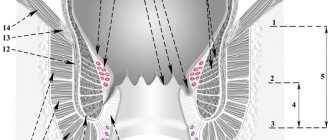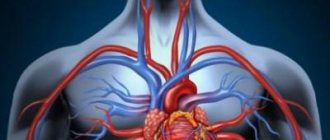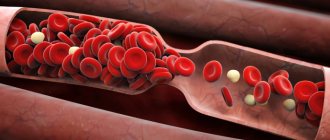Laboratory and clinical testing of diastase in the blood is prescribed at the Sensitive LCC in Yeysk, mainly for diseases of the gastrointestinal tract.
Diastase is a pancreatic enzyme involved in digestion. This enzyme enters the duodenum as part of pancreatic juice, and diastase is broken down into complex carbohydrates in the intestine.
If the pancreas is healthy, the concentration of diastase is always at a small but constant level. But if there are changes in the functioning of the organ, then the level of diastase also changes.
Diagnosis of blood for diastasis
To diagnose blood for diastasis, venous blood is taken at the Sensitive LCC in Yeysk. For a more reliable analysis, a few days before blood sampling, you should avoid fatty and fried foods. You should also consult with your doctor about medications that you take regularly - some of them can distort the result of the diastase test. Alcohol should be avoided the day before the test, and smoking should be avoided for several hours.
Blood is donated in the morning on an empty stomach. After taking blood, carbohydrates are added to it, and they look at the speed at which they are broken down in the patient’s blood. The higher the diastase activity, the higher the rate of carbohydrate breakdown.
Reasons for decreased diastase
As a rule, a decrease in amylase levels is rarely diagnosed. This result may indicate serious diseases that require long-term, often surgical, therapy:
- Tumor growth that transforms most of the cells of the pancreas. With this diagnosis, both an uncontrolled increase in the secretion of enzymes and the inability to produce them can be observed.
- Necrotic changes in pancreatic tissue, as a result of which it loses the ability to synthesize diastase.
- Congenital enzymatic abnormalities (cystic fibrosis).
It is impossible to make a final diagnosis based on the results of a test for diastasis. To confirm the doctor’s suspicions, a complete biochemical blood test, ultrasound diagnostics, or other methods may be needed. A normal alpha-amylase level indicates the integrity of the pancreas and salivary glands and the absence of pathologies of carbohydrate metabolism. Deviation of the result towards an increase or decrease in the level of diastasis may be the basis for making a final diagnosis in case of severe symptoms of certain diseases.
The norm of diastase in the blood for adults
The level of diastase in the blood is determined in units/l. The normal values are as follows:
- for children over 2 years of age and adult women and men - 25-125 units/l, for elderly patients - from 20 to 160 units/l.
- for women during pregnancy - 25-125 units/l.
The level of diastase may be increased in the case of pancreatitis, pancreatic cancer, cholelithiasis, acute or chronic renal failure, peritonitis, mumps, diabetes mellitus
Reasons for decreased diastase: cancer metastases, necrotic changes in pancreatic tissue, congenital enzymatic abnormalities (cystic fibrosis).
To clarify the diagnosis, the doctor at the Sensitive LCC in Yeysk will need to conduct other types of diagnostic studies.
What is Check-Up?
We combine holidays in Yeysk with comprehensive examinations
Complex tests in Yeysk: TORCH infections
For the first time in Yeysk - a complete medical examination Check Up!
Reasons for increased diastase
A biochemical blood test with determination of alpha-amylase is indicated for suspected acute or chronic pancreatitis. An increase in the level of this enzyme may indicate a number of pathologies and require additional diagnostics.
Among the main reasons for increased alpha-amylase in the blood are:
- Inflammation of the pancreas - pancreatitis. With this disease, the secretory function of the organ is disrupted, the outflow of pancreatic juice is hampered, which is why the enzyme accumulates in the blood in increased quantities.
- Pancreatic cancer, in which increased secretion of the enzyme occurs. The indicator will increase when the tumor is localized in the body or head of the organ.
- Cholelithiasis with migration of stones into the bile ducts.
- Acute or chronic renal failure. Normally, diastase is excreted from the body by the kidneys, but if their functioning is disrupted, the enzyme accumulates in the blood.
- Peritonitis is inflammation of the peritoneum. The inflammatory process affects the functions of all organs, including the pancreas, provoking the release of amylase in large quantities.
- Diabetes mellitus is a disease associated with pathologies of carbohydrate metabolism. When carbohydrates are broken down, not all amylase is consumed; some of it continues to accumulate in the patient’s blood.
- Mumps is an inflammation of the parotid salivary gland. Diastase is produced by cells not only of the pancreas, but also of the salivary glands. In diseases that are accompanied by an inflammatory process (mumps), its level in the blood increases.
Diseases of the pancreas are accompanied by an increase in diastase in the blood
An increase in the level of alpha-amylase in the blood can be a symptom of serious pathologies of internal organs. The analysis is carried out according to indications (suspicion of pancreatitis), its results can confirm or refute the preliminary diagnosis.
Why do girls have a protruding lower abdomen and what to do?
Olga Shuppo, scientific director of the Grand Clinic, gave a comment to the Live portal
Link to original source
The stomach is one of the “popular” problem areas for women. This is due to the characteristics of lifestyle, genetics, and hormonal levels. Sometimes the lower abdomen can bulge even in slender girls. Why?
Protruding lower abdomen in women: main reasons
Let’s not touch on the topic of excess weight now: if your BMI is significantly higher than normal, a slightly “sticking out” lower abdomen may be a completely natural consequence of this. If you are generally slim, but your lower abdomen still bulges noticeably forward, you may need to undergo a comprehensive examination.
In general, women are more likely to accumulate fat tissue in the abdominal area. This is due to evolution. “In men, fat is usually evenly distributed throughout the body, while in women it accumulates zonally,” explains Vladimir Kuzelin, Candidate of Medical Sciences, sports medicine doctor at the MEDSI Clinic in Izhevsk. “Plus, there are differences in the structure of adipose tissue. In men, adipose tissue is denser, in women it is looser. In men, the connective tissue that surrounds the adipose tissue is denser; it simply prevents the adipose tissue from “bulging” through the skin. But in women, connective tissue does not have such advantages; it immediately leads to the appearance of cellulite.”
“The fat layer in women forms in this area faster than in men. The subcutaneous fat layer is designed by nature as a shock absorber to potentially protect the pelvic organs and fetus from external influences. It is also a kind of reservoir of the hormone estrogen, which is responsible for reproductive function,” adds Olga Shuppo, scientific director of the Grand Clinic network of immunorehabilitation and preventive medicine clinics.
This parameter is set by nature. “More precisely, the female hormone estrogen, which triggers the process of weight gain in women. This is due to the reproductive function of a woman, fat in the lower abdomen acts as protection for the fetus,” adds Leonid Zasedatelev, a specialist in rehabilitation and posture correction.
Here are the main reasons why women may have a protruding lower abdomen.
Postural disorders
"Protrusion" of the abdomen forward can be caused by hyperlordosis. “The spine has natural curves (kyphosis and lordosis), which are formed in connection with upright posture; they are necessary for shock absorption,” explains Vladimir Kuzelin. — In the lumbar spine, the forward bend is called lordosis. Normally, its size ranges from 3 to 5 cm; if the bend is more than 5 cm, hyperlordosis occurs. At the same time, our back muscles spasm, but our abdominal muscles stretch. Plus, hyperlordosis bulges forward, puts pressure on the internal organs, and they put pressure on the inner wall, which also leads to protrusion of the lower abdomen.”
Hyperlordosis can be congenital or acquired - for example, due to an abnormal gait pattern.
You can find out whether you have hyperlordosis yourself. “To do this, you need to stand against the wall and press your back, shoulders, feet and head tightly against it,” notes Maria Belyaeva, nutritionist, health-coach. — Pay attention to the distance between the lower back and the back. If your palm passes smoothly through this area, you most likely have hyperlordosis.”
Poor posture can be corrected by physical exercise and massage practices, which we will discuss below.
Prolapse of internal organs
As they descend, the abdominal organs shift from their place, causing the lower abdomen to visually protrude forward. “This can be caused by weakness of the abdominal muscles, pelvic floor and ligaments,” explains Vladimir Kuzelin.
Weak pelvic floor muscles can also lead to a protruding lower abdomen. “The pelvic floor muscles support the internal organs and are involved in maintaining intra-abdominal pressure; their weakening means prolapse of the internal organs,” says Leonid Zasedatelev.
Diastasis
This is what is called the divergence of the rectus abdominis muscles. “In this case, they are not on the same level, not parallel to each other, but diverge. This leads to the formation of a round belly,” says Vladimir Kuzelin.
Gastroenterological diseases
These include chronic constipation and gas formation. “In this case, the stomach will look like a balloon. Usually it looks normal in the morning, but throughout the day it “puffs up”, especially after eating. The most interesting thing is that the scales do not display this. Frequent gas formation can be the cause of bacterial growth syndrome, or hidden intolerance to foods, for example, those containing gluten or lakotz,” adds Maria Belyaeva.
Endocrinological disorders
We are talking about hormonal imbalances. “In menopausal women, the production of progesterone and estrogen decreases, which manifests itself in the form of deposition of excess fat in the abdominal area,” says Vladimir Kuzelin. - You can also highlight polycystic ovary syndrome, which leads to local deposition of fat in the abdominal area. The absence of thyroid hormones at the proper level leads to a decrease in lipolysis, impaired lipid breakdown and, unfortunately, immediately contributes to the accumulation of fat.”
Thus, thyroid problems can lead to bulging of the lower abdomen.
Lifestyle
Lack of sleep and prolonged periods of stress provoke the production of cortisol. “It causes the body’s resistance to another hormone, insulin, which is responsible for transferring carbohydrates and blood sugar to the “depot” - the liver. Because of this, sugar from the blood passes into fat mass and leads to abdominal, abdominal obesity,” adds Vladimir Kuzelin.
Gynecological disorders
A large ovarian cyst or uterine fibroids can lead to protrusion of the lower abdomen.
Oncological diseases
Unfortunately, a bulging lower abdomen can be a symptom of a dangerous disease. “A protrusion of the abdominal cavity can be caused by intestinal cancer,” warns Vladimir Kuzelin.
Weakness of the abdominal muscles
Stretched and weak abdominal muscles can lead to protrusion. “If you pump up your abs, this is not a guarantee of a solution to the problem,” explains Maria Belyaeva. — An indicator of strong abs is cubes, but they can also be located on a bulging belly. The transverse muscle, which is located under all other muscles, is responsible for holding the abdomen. Only it can reduce the size of the abdominal cavity.”
To solve the problem in this case, Maria advises regularly performing the abdominal vacuum exercise.
“Also, in women with this feature, the interaction of myofascial chains may be disrupted - this is a stabilization system, which is a combination of certain muscles located along certain lines of mechanical tension of the connective tissue, which arises due to the influence of static and dynamic load,” says Olga Shuppo. - As a rule, the anterior myofascial chains will be shortened in this case. This leads to disruption of the biomechanics of the spinal region, causes shortening of the torso flexors, and changes the location of the pelvis. Thus, the abdominal organs are forced to hang over the inguinal fold.”
Among other factors, experts also highlight heredity, unbalanced diet, and bad habits.
Protruding lower abdomen: what to do
The key here is to determine the cause of the protruding belly. If you do not have hyperlordosis (and you found this out as a result of a home test), but have any accompanying symptoms (pain in the lower abdomen, discomfort after eating or defecating, constipation, etc.), experts recommend visiting a general practitioner who will prescribe diagnostics.
The solution to the problem must be comprehensive. “If we encounter this pathology, we need to perform the appropriate diagnosis - find the main causes. If this is hyperlordosis of the lower back, a consultation with a physical therapy doctor, an orthopedist, a traumatologist, and an x-ray will help with this,” says Vladimir Kuzelin. — If we have diastasis, prolapse of internal organs, we will need a consultation with a surgeon and an ultrasound. If these are clinical manifestations of endocrinological disorders or gynecology, then we need consultation with specialized doctors.”
What methods can be used to solve the problem? Exercise therapy or health training, massage and, of course, lifestyle correction are often prescribed. “In addition to physical training, we can recommend a balanced diet, appropriate microelements, drinking regimen, quitting smoking and alcohol,” sums up Vladimir Kuzelin.
“In addition, visceral abdominal massage techniques can be useful, with the help of which specialists put internal organs and systems in place, improve lymph flow - this allows you to remove excess swelling inside and straighten the stomach itself. As an additional therapy, they also resort to methods of myostimulation on the abdomen. This is a hardware technique where weak electrical impulses are applied through special electrodes, promoting muscle contraction and burning of excess fat,” adds Olga Shuppo. “If there is excess subcutaneous fat, lipolytics can be used - injections that help break down excess fat, hydromassage, which effectively drains the entire body and helps reduce swelling.”
The most important step here is to determine the cause. “It depends on what strategy to choose to improve the situation,” says Leonid Zasedatelev. - If hormones are within normal limits, then it makes sense to train the pelvic floor muscles and abdominal muscles - this will help support the abdominal organs. You can also correct your posture with the help of a specialist, if necessary. It makes sense to adjust your diet and pay attention to your emotional state, perhaps the presence of stress and it’s worth working with it to improve the physiological processes associated with psychosomatics.”
Experts advise approaching the problem of a bulging belly thoughtfully and thoroughly. You shouldn’t immediately go on a strict diet or work out your abs to the point of fainting - perhaps the reason is not muscle weakness at all.









